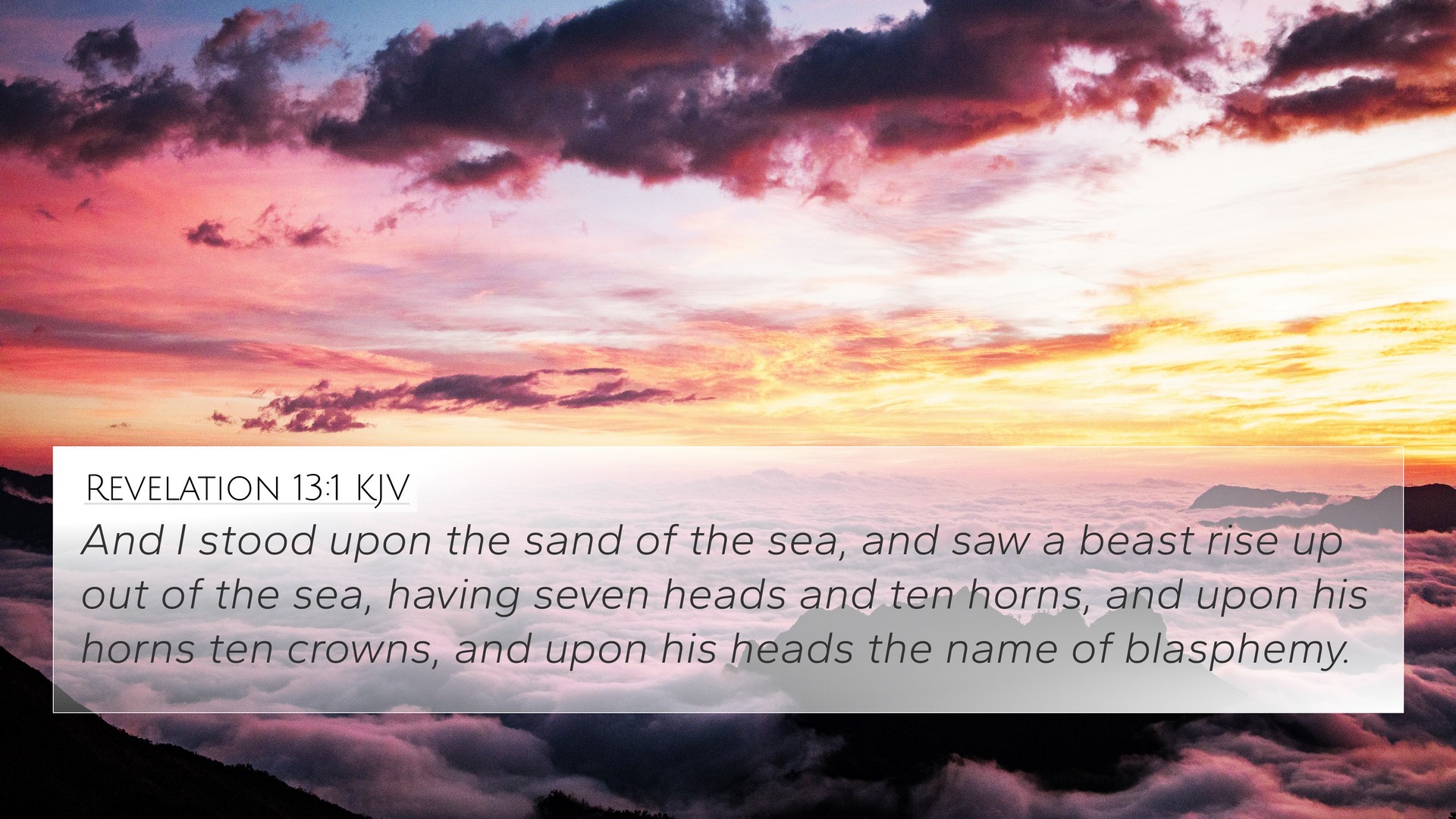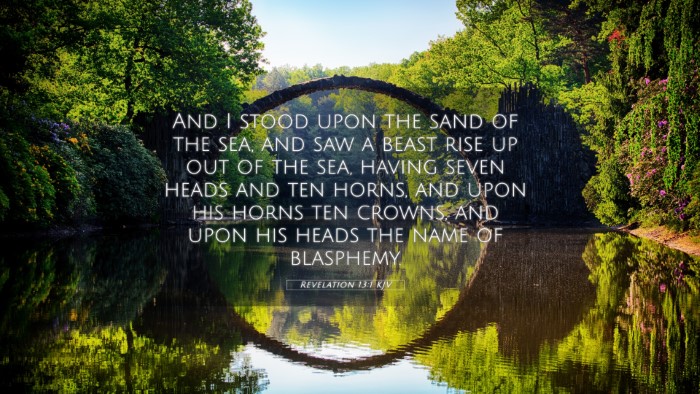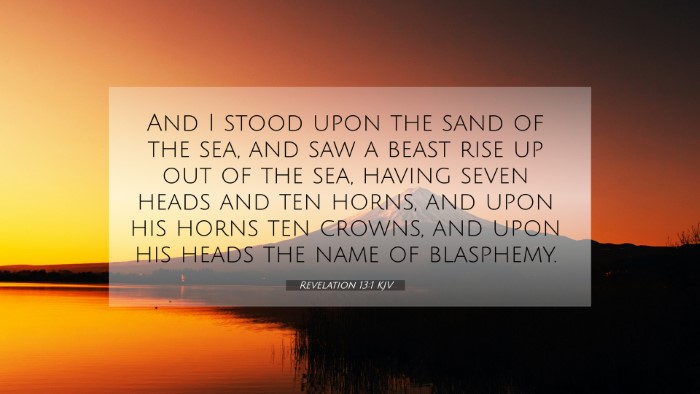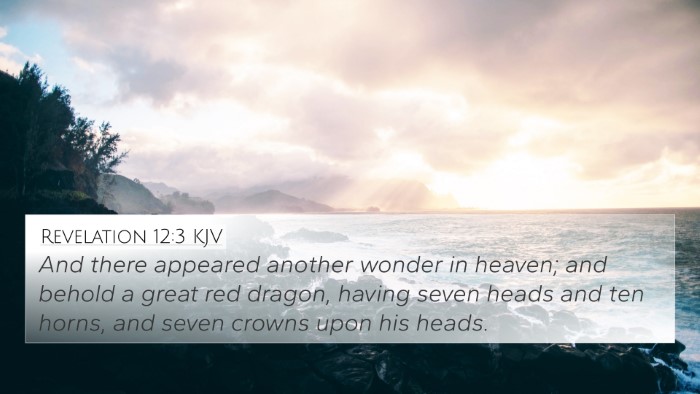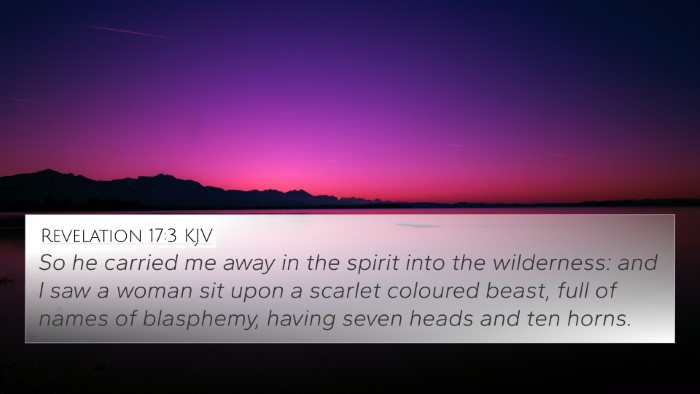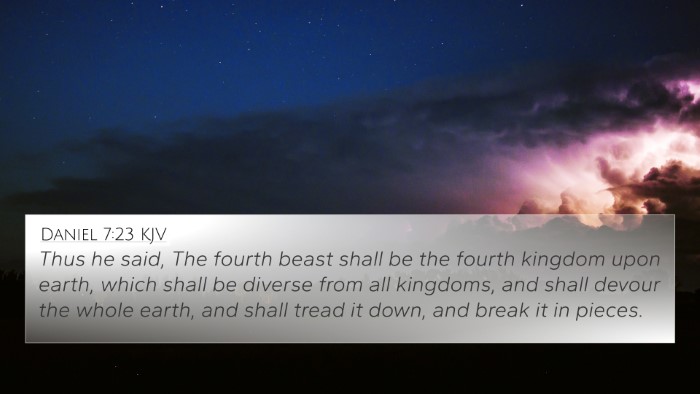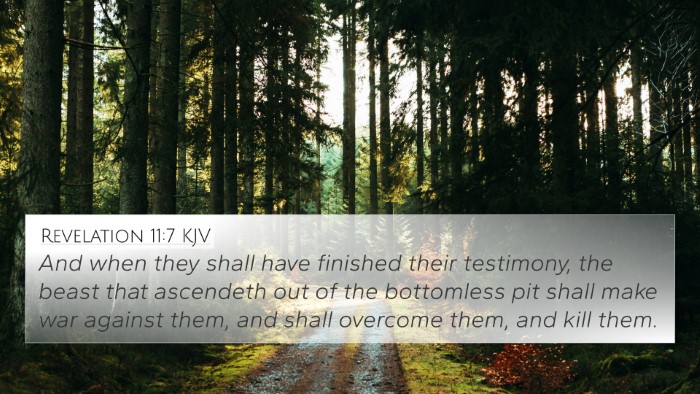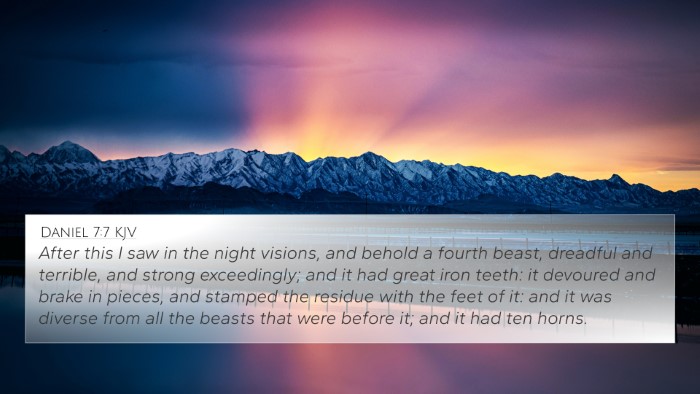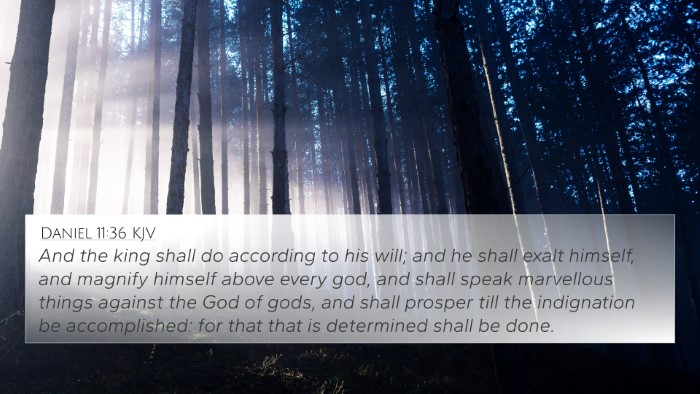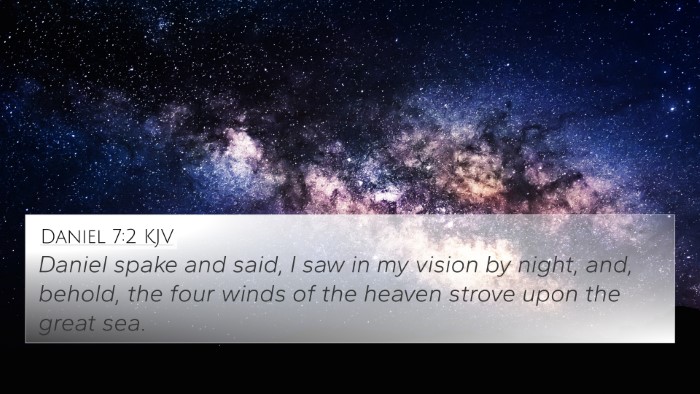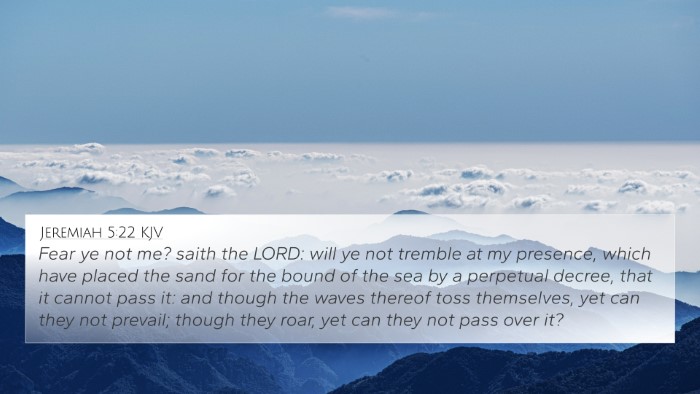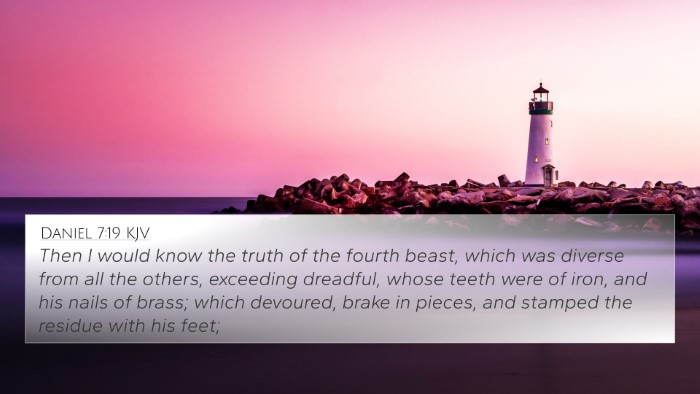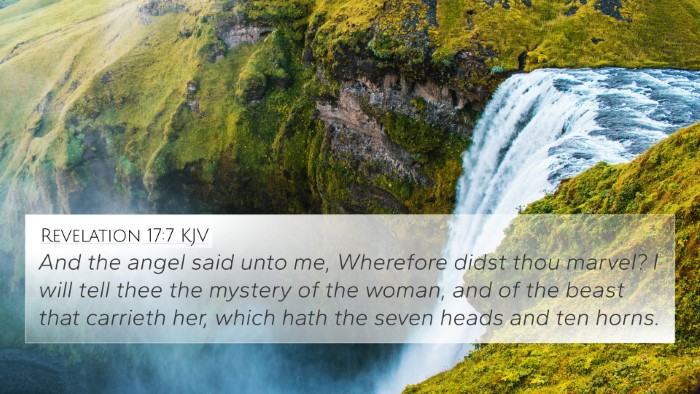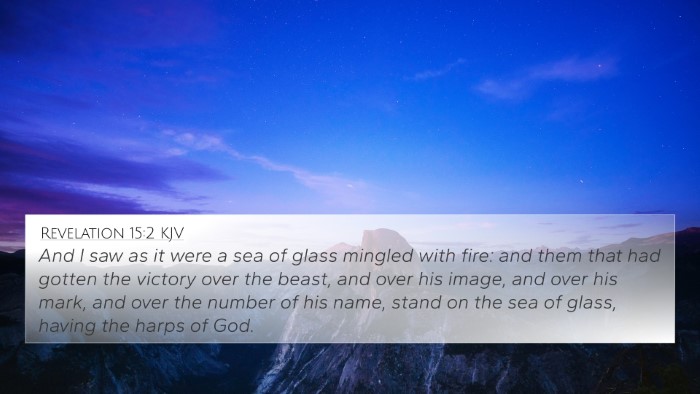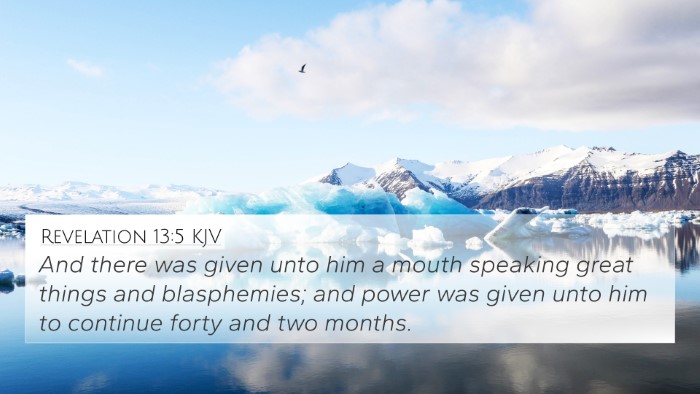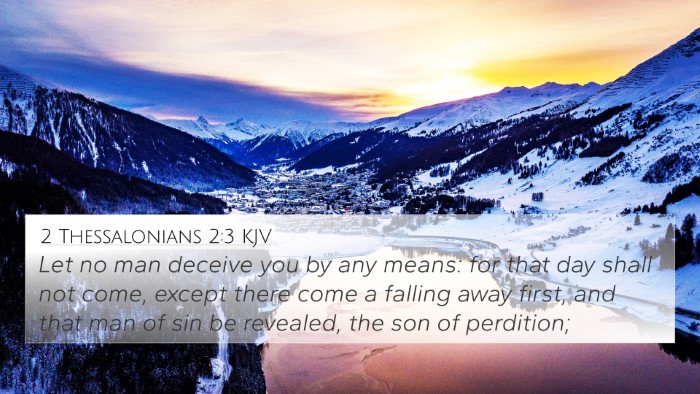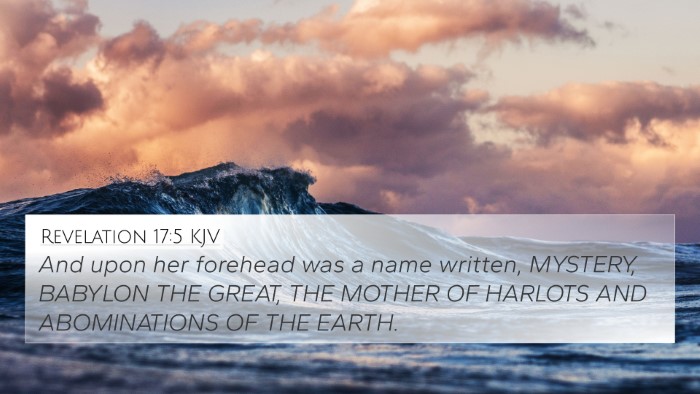Bible Verse Interpretation: Revelation 13:1
Verse: Revelation 13:1 states: "And I stood upon the sand of the sea, and saw a beast rise up out of the sea, having seven heads and ten horns, and upon his horns ten crowns, and upon his heads the name of blasphemy."
Meaning and Analysis
Revelation 13:1 introduces a significant and complex vision in the apocalyptic narrative that deserves detailed commentary. Various public domain scholars, including Matthew Henry, Albert Barnes, and Adam Clarke, provide distinct insights into this verse. Their analyses guide us to a deeper understanding of the symbolisms and implications surrounding the imagery presented. Below, we summarize their views.
Symbolism of the Beast
Matthew Henry: Henry emphasizes that the beast symbolizes powerful earthly nations or empires that oppose God's kingdom. The seven heads and ten horns indicate a completeness of authority and a formidable strength that represents various kings and kingdoms throughout biblical history.
Albert Barnes: Barnes elaborates that the "beast" denotes a system of oppression or evil, specifically connected to the end times and the ultimate rebellion against divine authority. The heads symbolize the hills upon which the city of Rome sits, while the ten horns represent ten kingdoms that are to rise during the last days.
Adam Clarke: Clarke interprets the beast as a metaphor for the apostate church—the entity that promotes wickedness and turns away from true worship. He connects the blasphemy written on the heads as an indictment against the proud defiance of divine truth displayed by both religious and political institutions.
Connections with Other Biblical Texts
This verse can be cross-referenced with various passages to enhance understanding:
- Daniel 7:3-7: Describes beasts symbolizing empires, connecting the imagery of Revelation to Old Testament prophecy.
- Revelation 17:3: Further describes the beast and its components, elaborating on its significance.
- 1 John 2:18: Mentions the Antichrist and relates to the themes of deception and opposition to Christ.
- Revelation 19:20: Continuation of the narrative concerning the fate of the beast, tying it back to the final judgment.
- 2 Thessalonians 2:3-4: Discusses the man of sin, paralleling attributes of the beast as one who exalts themselves against God.
- Zechariah 1:18-19: References horns as symbols of power, supporting the imagery found in Revelation.
- Luke 21:25: Biblical allusions to the distress of nations, resonating with the apocalyptic themes of Revelation.
Thematic Connections
The thematic substance of this verse encompasses a variety of doctrines and prophetic illustrations:
- Opposition to God: The beast symbolizes all forces that arise to oppose divine authority, reflecting the larger narrative of spiritual warfare.
- Judgment: The presence of blasphemy calls for divine retribution, highlighting the seriousness of turning against God's truth.
- Fulfillment of Prophecy: Understanding this verse is integral for recognizing the unfolding of biblical prophecy in both the Old and New Testaments.
Practical Applications
In the context of personal faith and collective belief systems, Revelation 13:1 teaches believers to remain vigilant:
- Awareness of Falsehood: Understanding that challenges to the truth arise from earthly powers encourages a steadfast commitment to biblical accuracy.
- Encouragement in Trials: Recognizing this beast works to oppose believers inspires hope in ultimate victory through Christ.
- Preparation for the End Times: The imagery could prepare believers mentally and spiritually for potential tribulations related to faith in the modern world.
The Role of Bible Cross-Referencing
This study has highlighted the importance of cross-referencing biblical texts for a comprehensive understanding:
By utilizing tools for Bible cross-referencing, believers can:
- Deepen their understanding of scriptural relationships and contexts.
- Use a Bible concordance for thematic studies across different parts of Scripture.
- Engage in a comparative Bible verse analysis to discover connections between verses that inform theological perspectives.
Conclusion
In summary, Revelation 13:1 is a pivotal verse in understanding the complexities of end-time prophecy and the nature of opposition against God's will. Through careful analysis and cross-referencing with related scriptures, believers can gain insight into God’s overarching narrative of redemption and judgment. Always employ Bible reference resources and Bible cross-reference guides to foster a deeper understanding and connection between scriptures, as they unveil the theological richness contained within the text.
